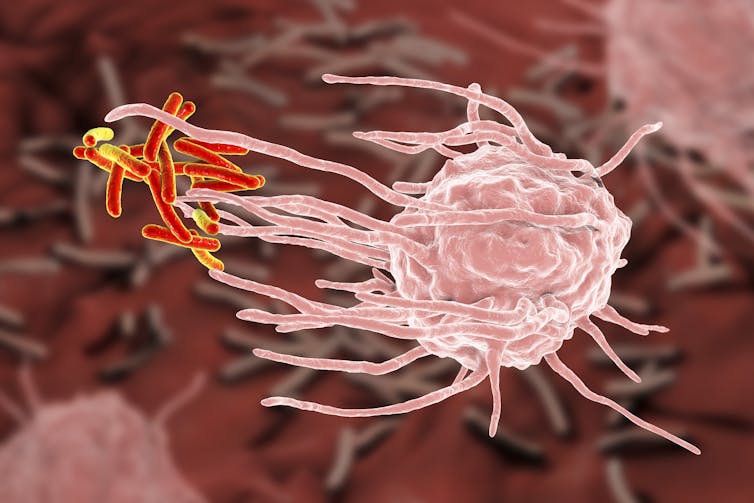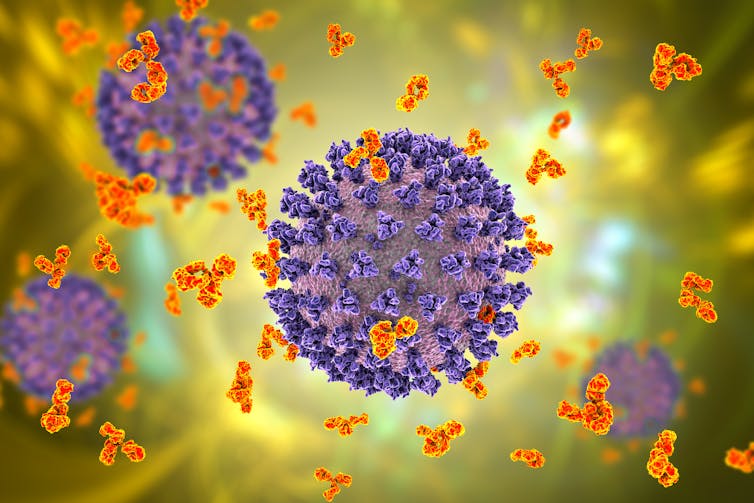The human body is a well-equipped fortress, designed to confront and defeat microscopic invaders known as germs. These microorganisms, including viruses, bacteria, and fungi, are everywhere, from the handle of the bus to the screen of your mobile phone.
Although some are benign and even useful (those that form the microbiota, the microscopic ecosystem that lives within us), others can cause diseases (we call them pathogens).
To maintain a healthy life, it is essential to understand how our body fights these pathogens. I will try to explain it briefly.
First line of defense
Just like in a castle, the first line of defense for humans is the physical and chemical barriers that keep out attackers. The most important parapet is the skin: not only does it act as an impassable wall for most germs, but it is also capable of producing oils and sweat with chemicals hostile to microbes, preventing their growth. Using pH-neutral soaps will be important to maintain this defensive function.
Other physical barriers in our bodies are the mucous membranes that line our mouth, nose, and eyes. They produce mucus and tears that serve to capture and “wash” germs away, thus acting as chemical barriers. Your stomach acid also acts as a powerful chemical shield against most germs that enter your body through food or drink.
When germs manage to cross these external barriers, the real action inside the body begins. The immune system, which is responsible for defending the interior, is the best professional army in the world, made up of millions of specialized cellular soldiers and numerous weapons of destruction. The joint action of these cells and molecular weapons is called the immune response.
Second defensive line: innate response
Innate immune cells are the first to attack. They act quickly but without discrimination. Some of these cells resemble inhabitants of Mordor, such as macrophages, which devour invaders; or neutrophils, which launch webs of sticky DNA that are deadly to microbes. And there are also killers specialized in killing infected or tumor cells: Natural Killer cells.
All these innate soldiers are always ready to attack and patrol your body tirelessly.

Among the destructive weapons of the innate response, we find the complement system, a set of proteins that helps kill bacteria, viruses, and infected cells by piercing their membranes or attracting immune cells.
In addition, in order for these immune cells to communicate with each other and with other cells, there are proteins called cytokines that regulate the actions of the army. Excess amounts of these produce inflammation, and if this gets out of control, it can be harmful.
Third line of defense: adaptive response
The innate response is used to contain infections. However, to resolve them permanently, your body will usually need the more specific part of immunity to be activated.
Upon detecting an intruder, innate foot soldiers quickly alert cavalry and commanding officers. These highly specialized elite forces carry out the adaptive response and are specific to each type of pathogen. They require more time to respond (between 7 and 10 days) but are extremely effective.
Your body will have two types of adaptive responses. The cellular response is carried out by helper T cells – the high command of the army that dictates orders to the rest of the soldiers – and cytotoxic T cells – something like the cavalry in charge of killing infected cells.
B cells are responsible for the humoral response. These “archers” produce antibodies that specifically attach to germs and toxins, marking them for destruction or blocking their ability to infect and damage your cells.

Immune memory and the role of vaccines
After fighting a battle against a pathogenic invader, adaptive immune cells will remember it for future attacks. This means that if the same type of germ tries to infect you again, your army will respond more quickly and efficiently to eliminate it.
Vaccines are based on this superpower of your T and B lymphocytes, which help the army learn to better defend you in future confrontations with the same enemy.
In short, your body is uniquely equipped to fight off germs, using several strategies that work together to protect you from illness. From physical barriers like your skin to highly sophisticated immune responses, each component plays a crucial role in that ongoing battle.
Knowing these mechanisms is not only interesting but also essential for us to put into practice healthy habits such as washing our hands and getting vaccinated. In this way, we will support the tireless work of our immune system.























+ There are no comments
Add yours